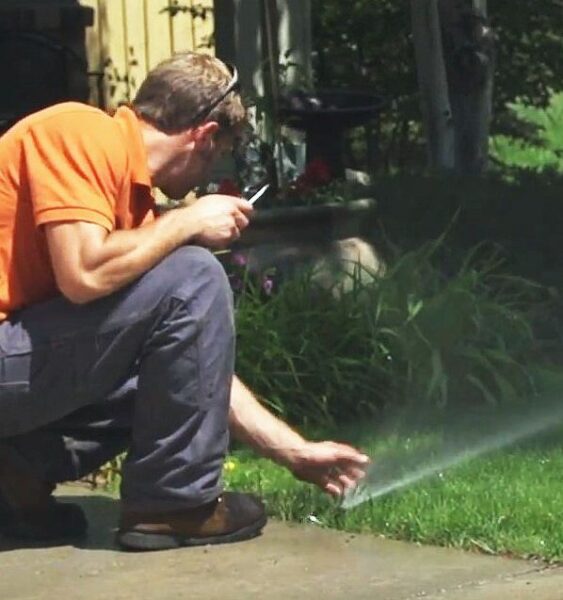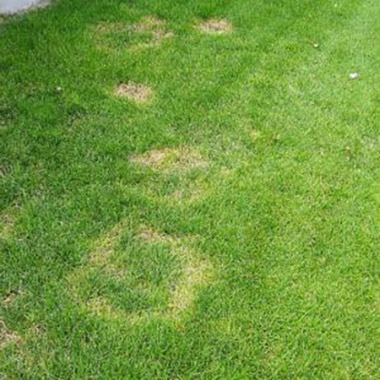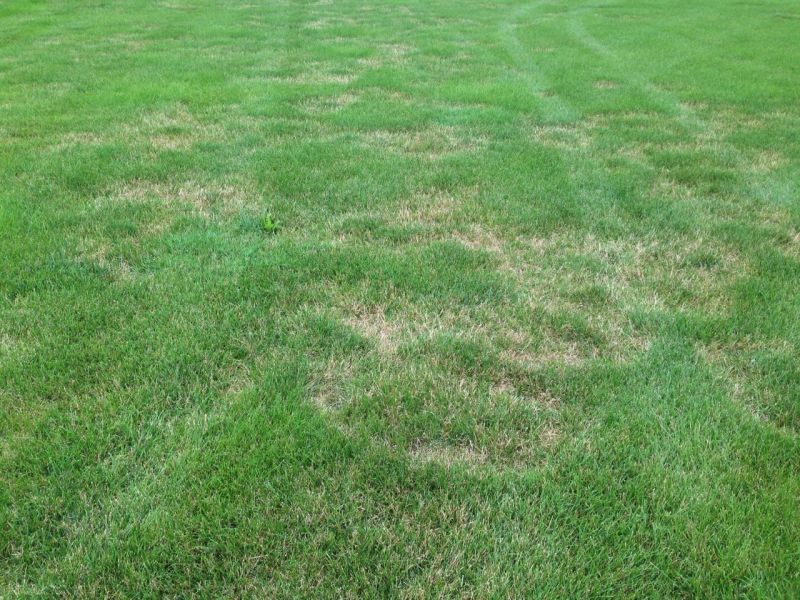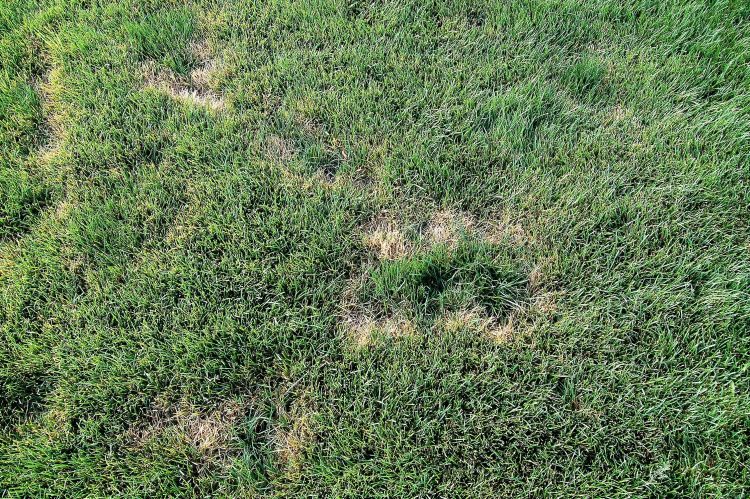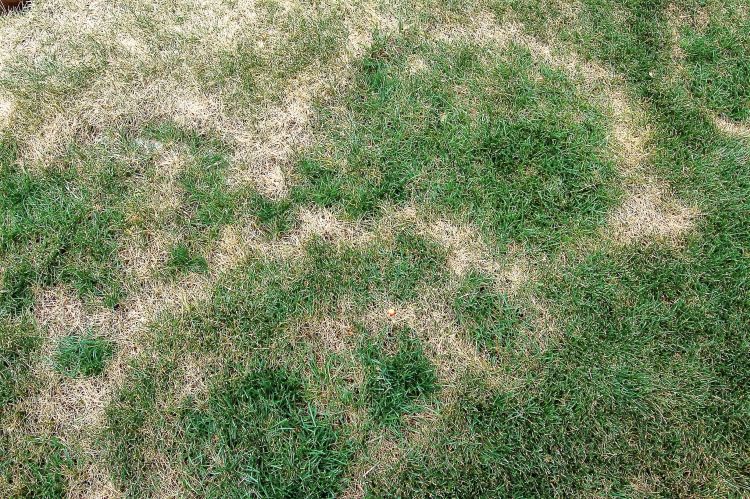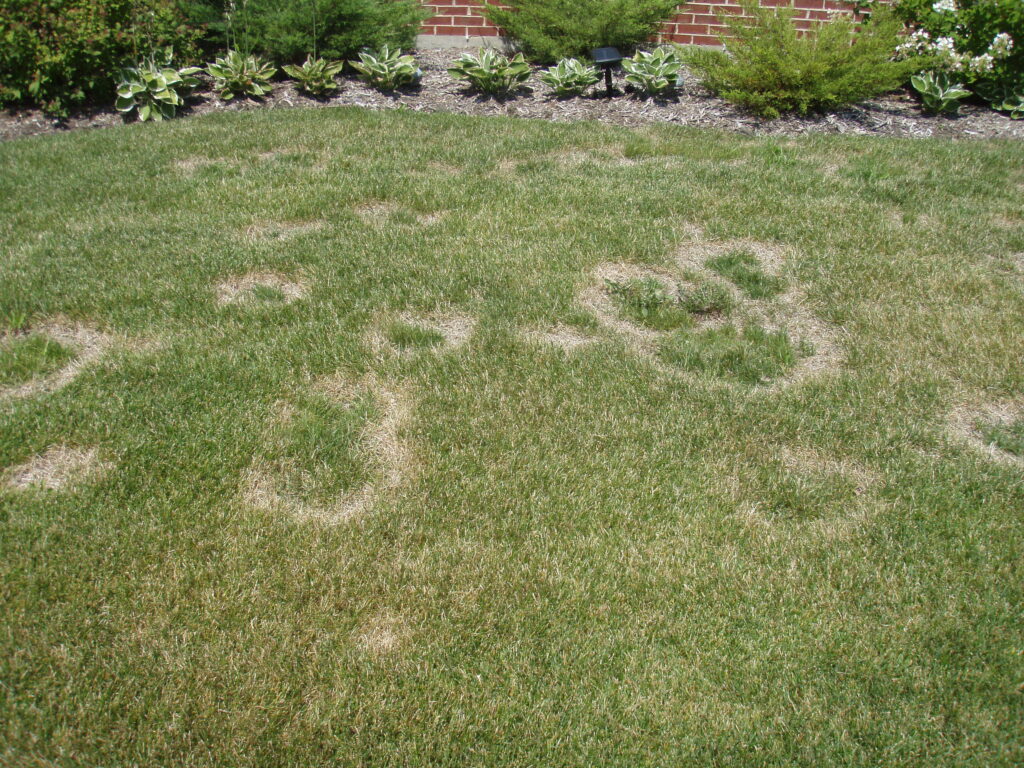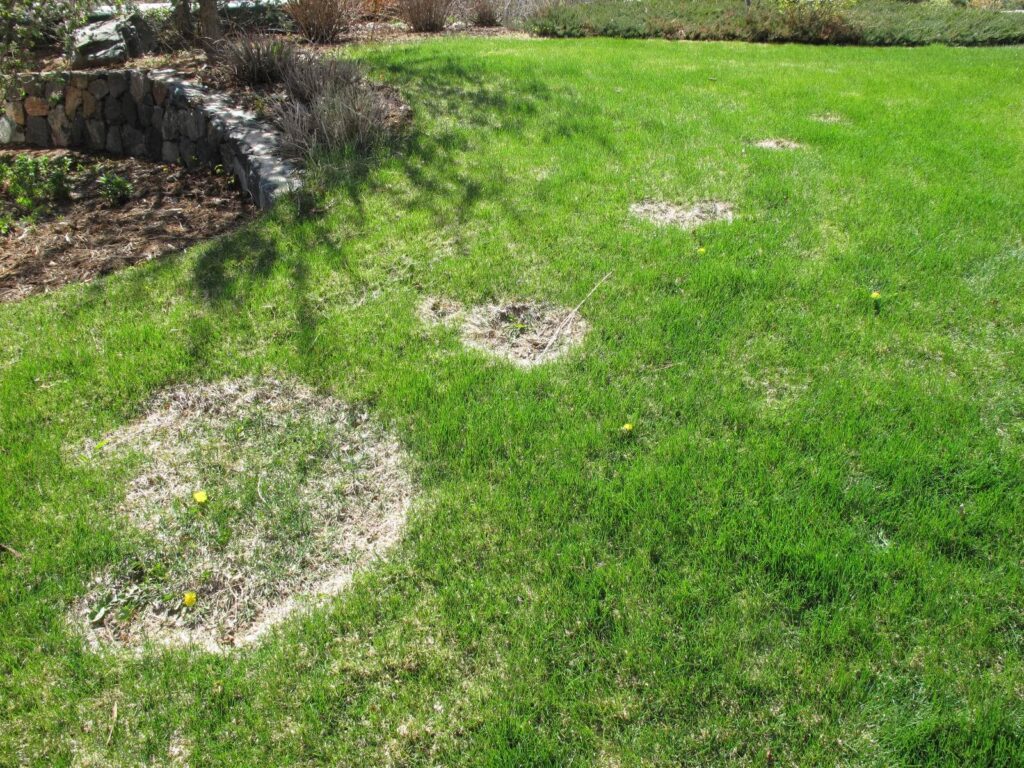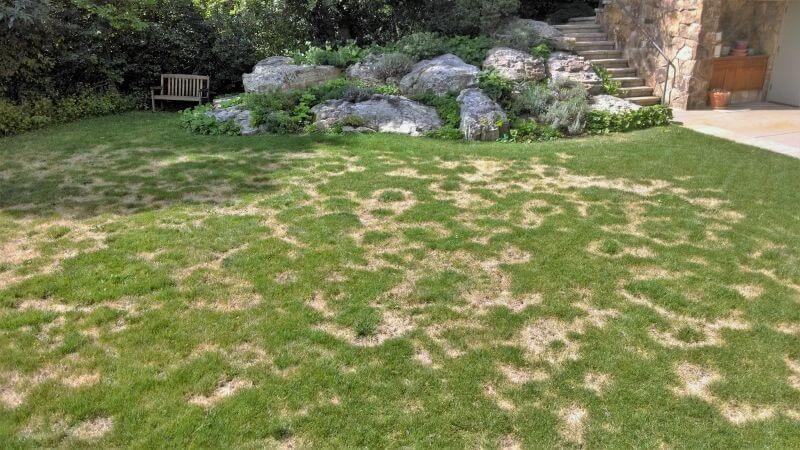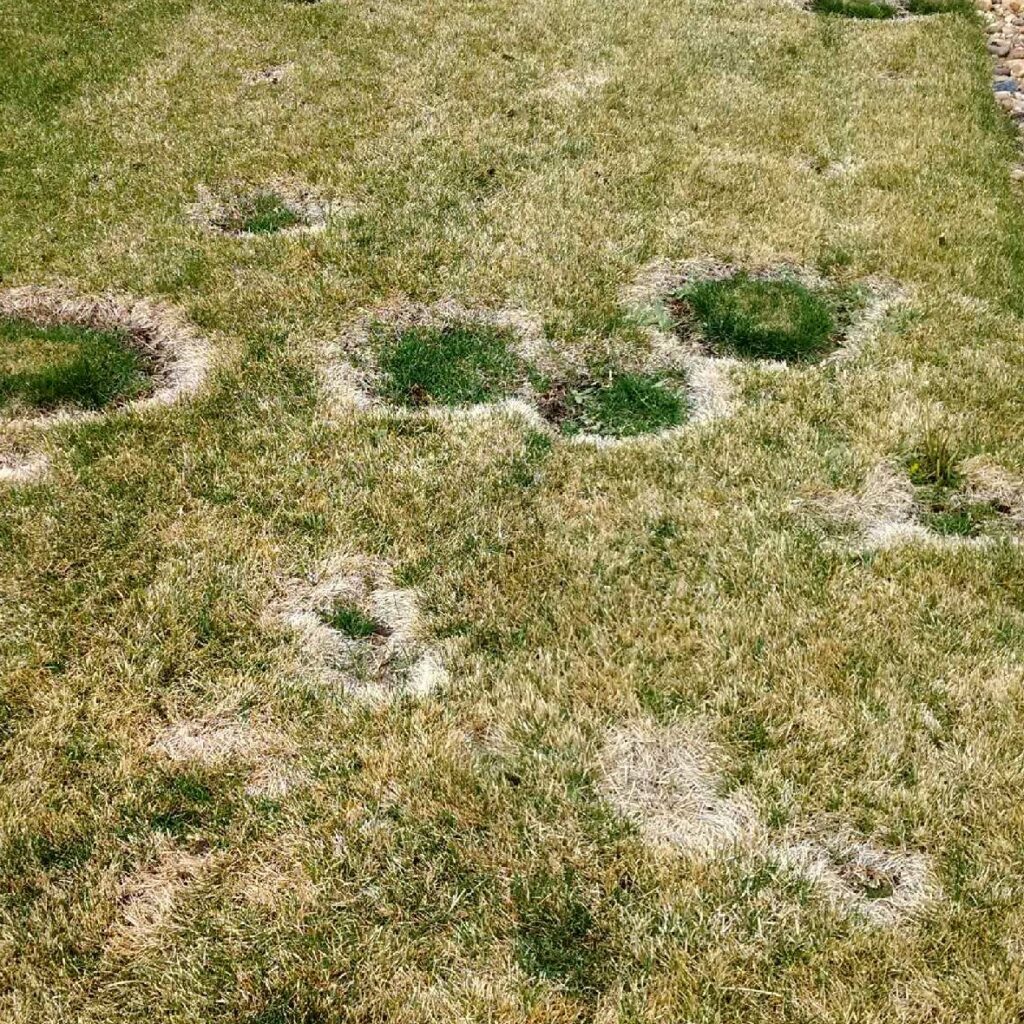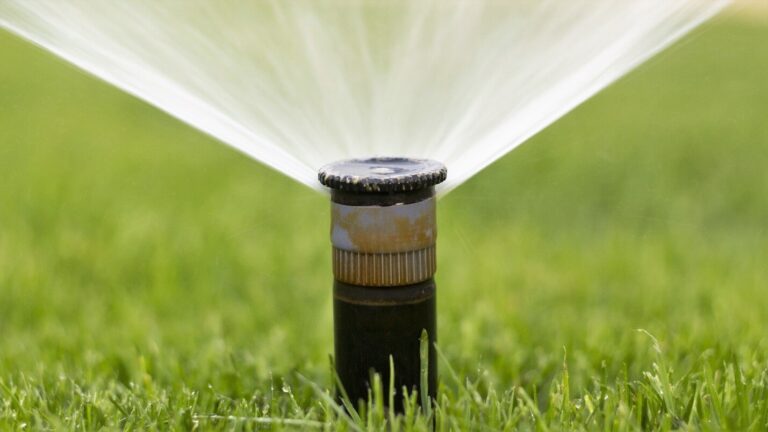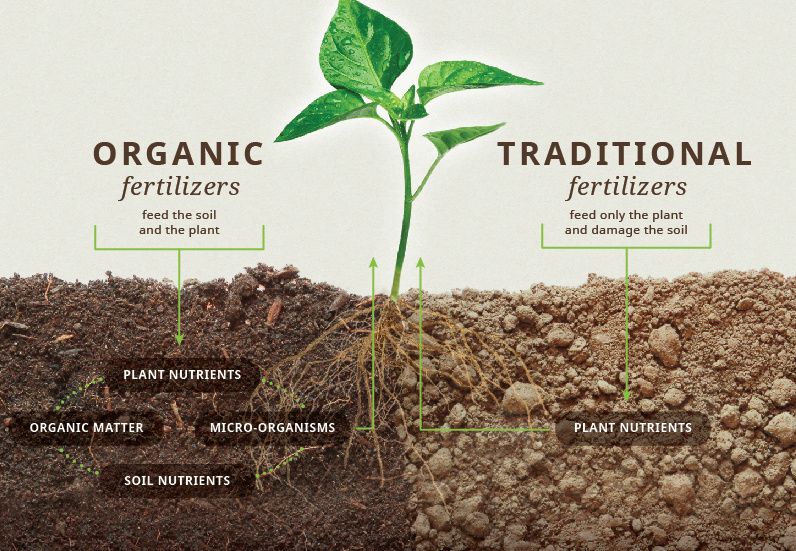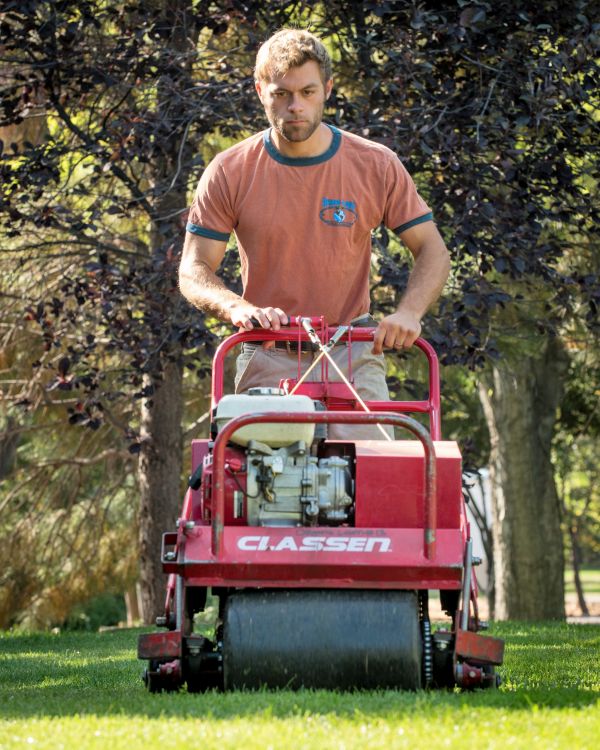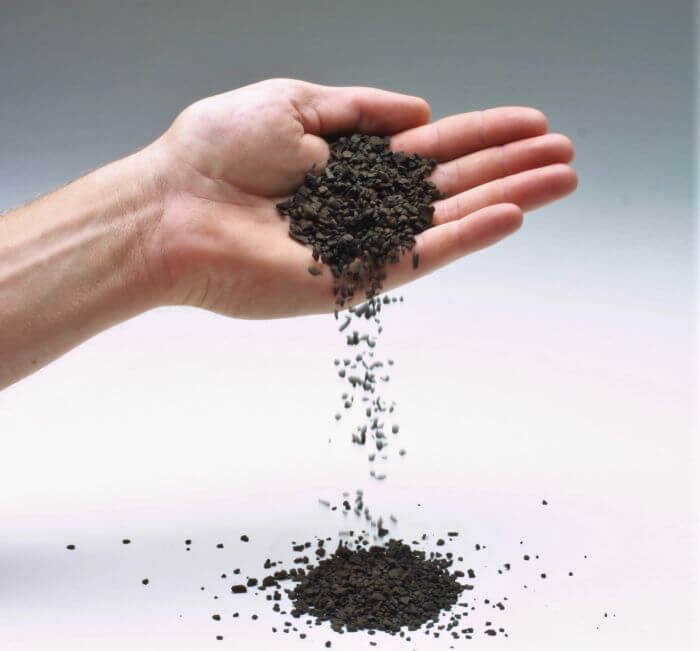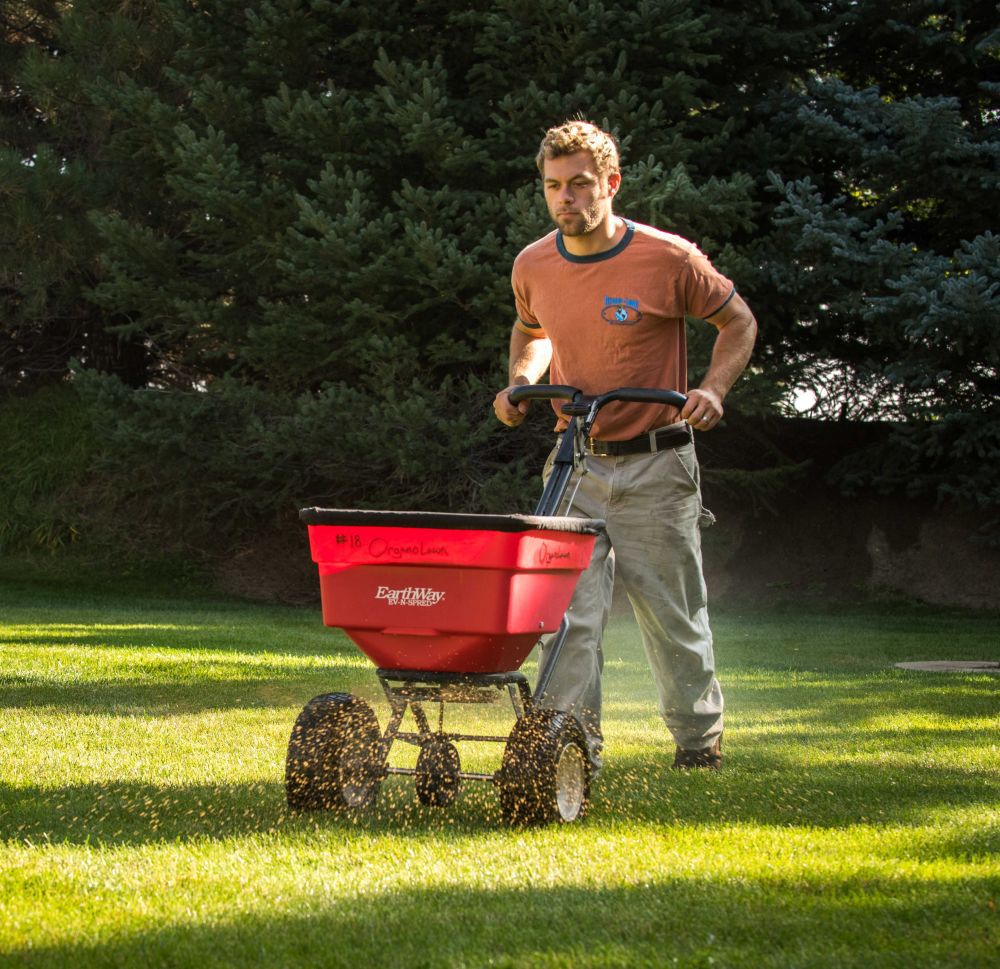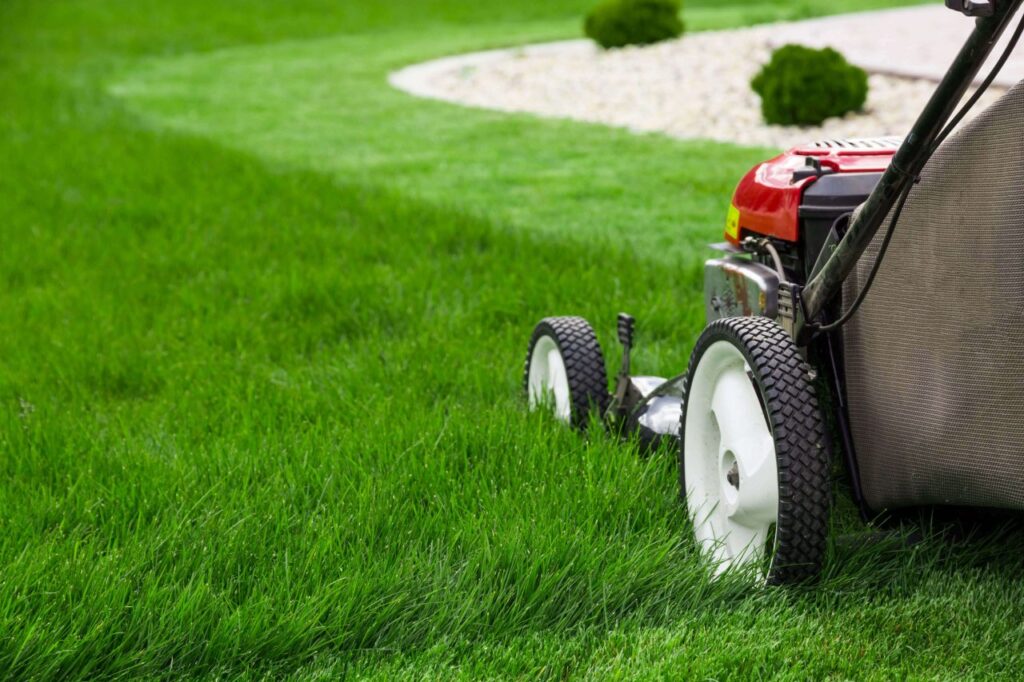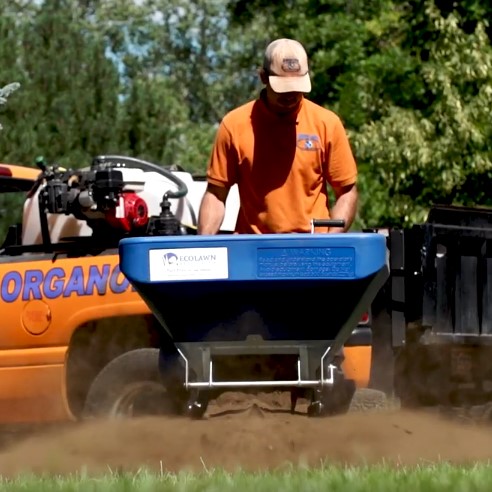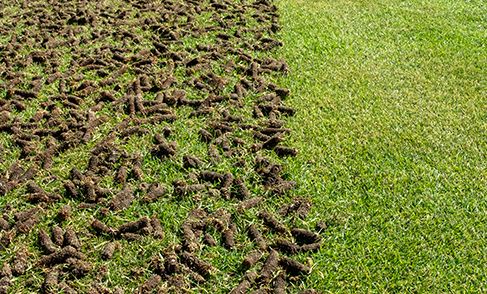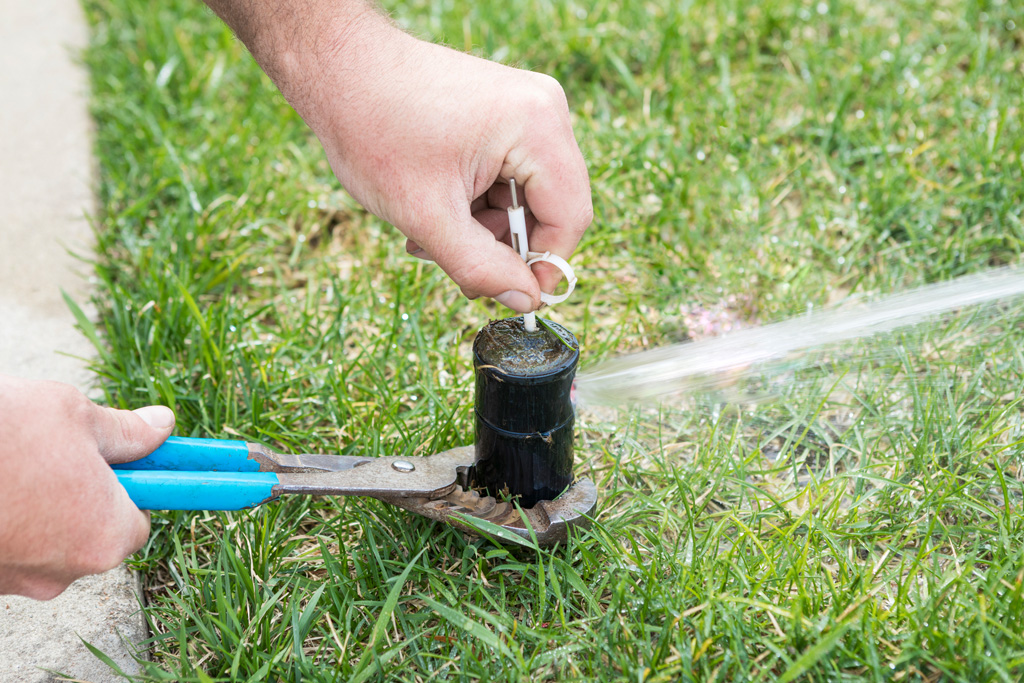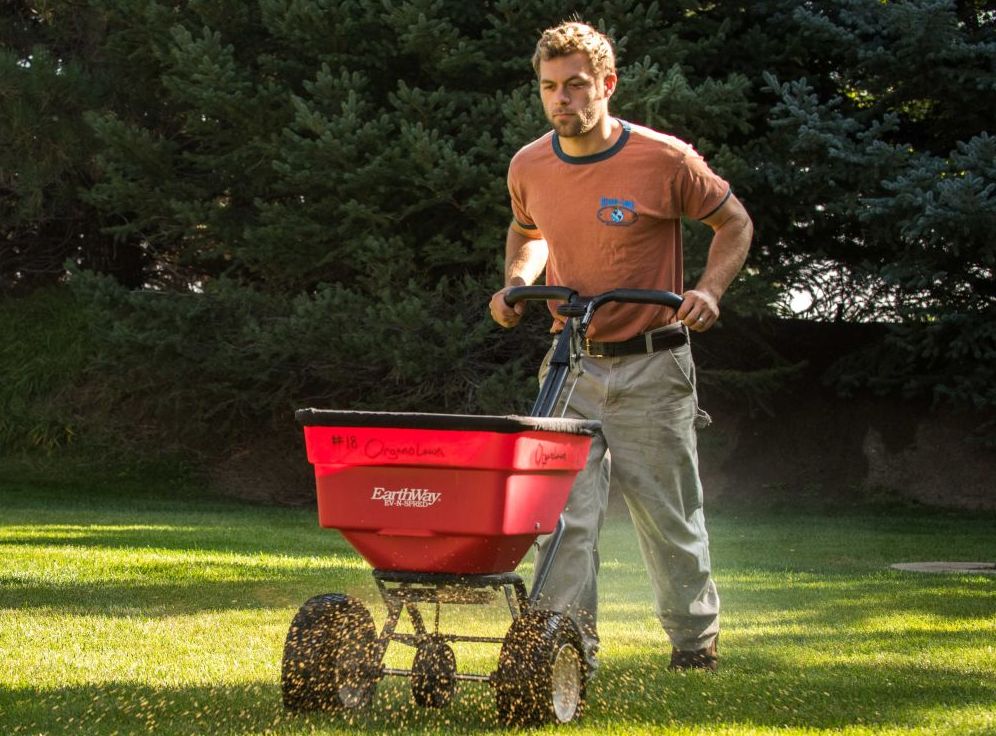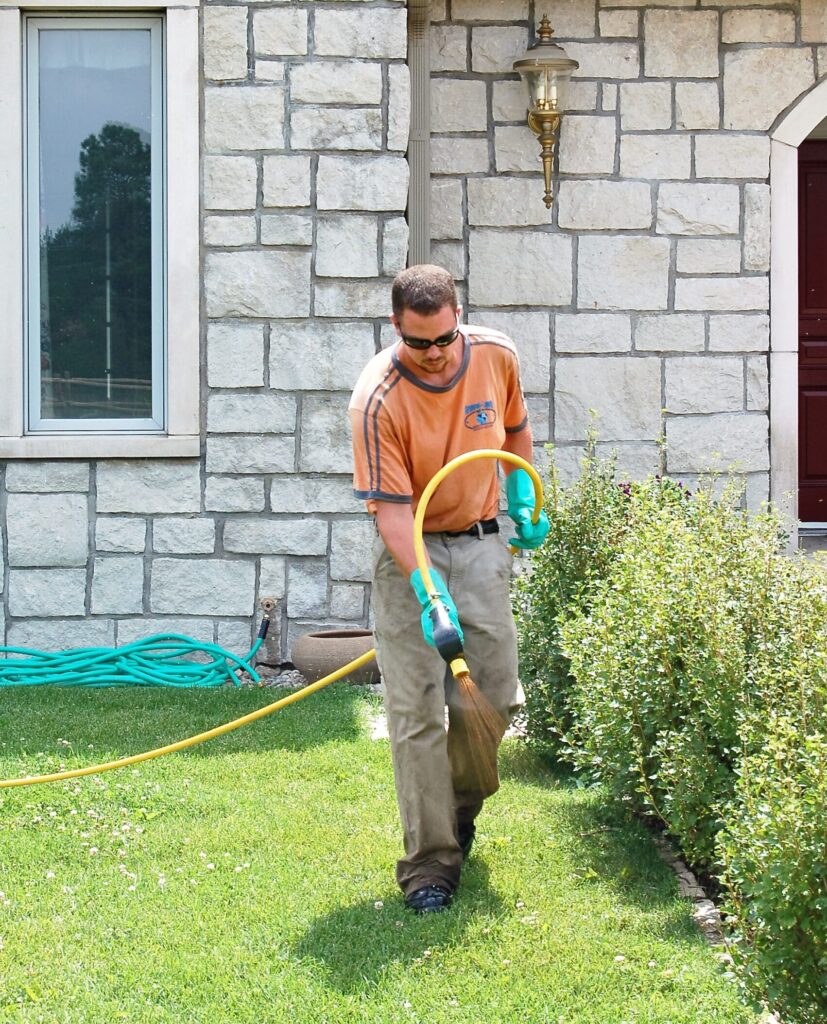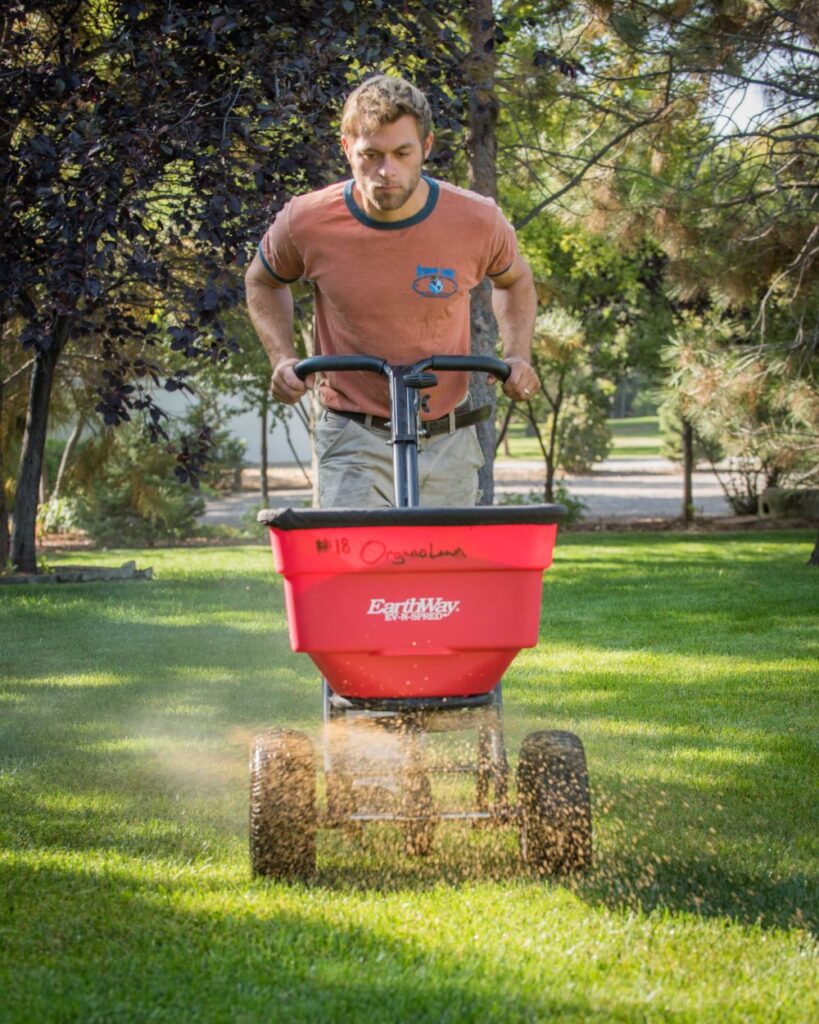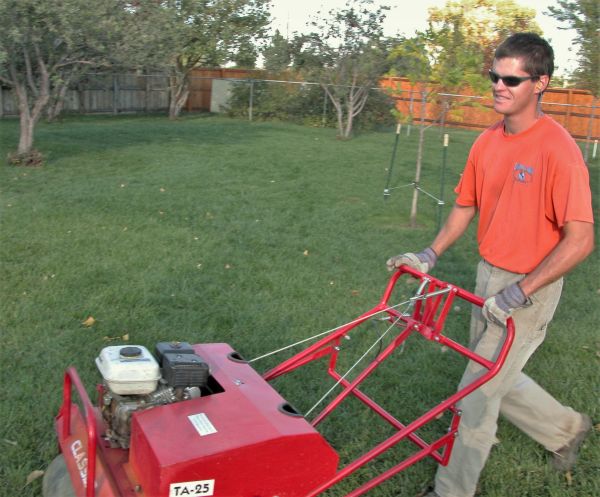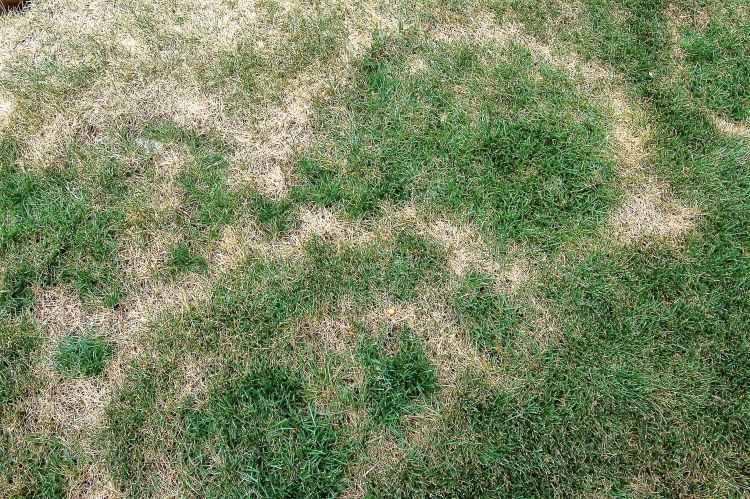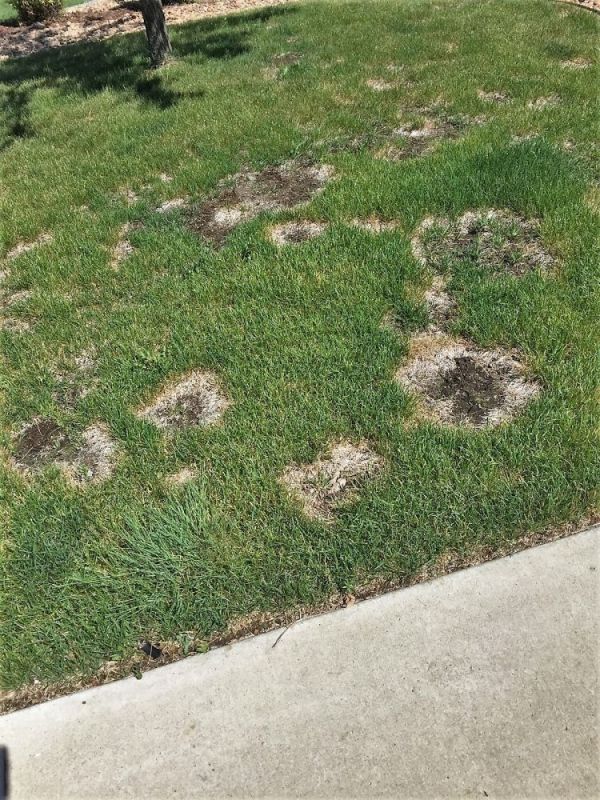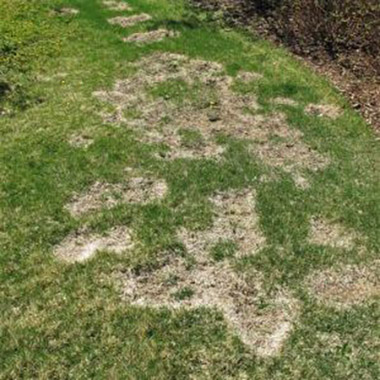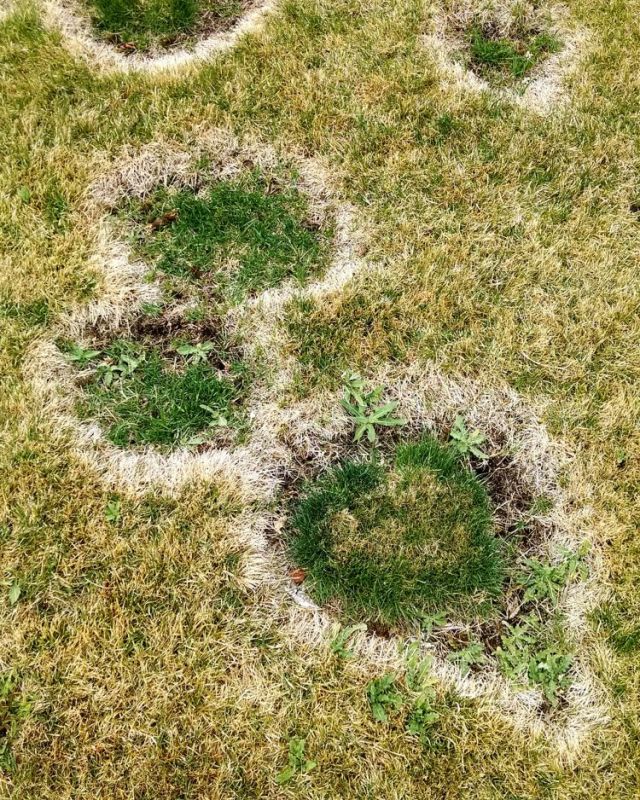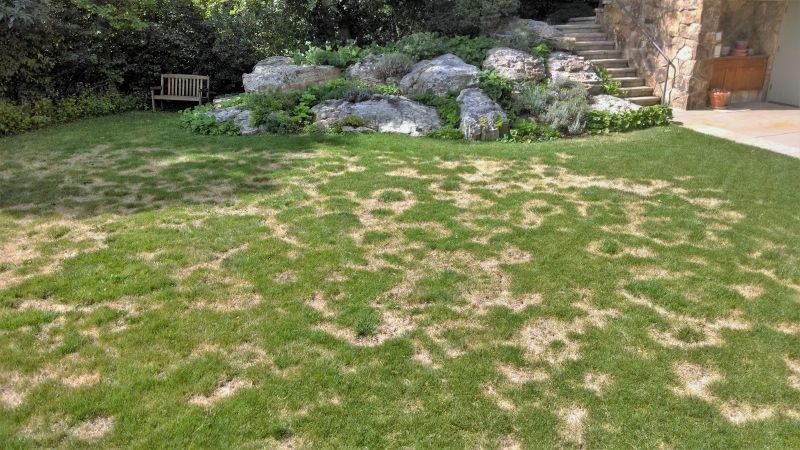NECROTIC RING SPOT FUNGUS
Necrotic Ring Spot Treatment Without Using Chemicals
Understanding the Cause and Recovery Process
Necrotic Ring Spot (NRS) is one of the most frustrating lawn diseases to cure. The main frustration is the misinformation regarding what causes necrotic ring spot and what is the proper treatment protocol.
What is the Main Cause of Necrotic Ring Spot?
The primary trigger for NRS is prolonged overwatering of the lawn, typically over several months. The problem is worsened when combined with chemical fertilizers, which disrupt the soil’s microbial balance and create low-oxygen conditions—the ideal environment for the Necrotic Ring Spot fungus to thrive.
Step #2 – Rebuild Soil Microbial Health
Restoring a healthy soil microbiome takes time and consistency, often requiring up to two years for full recovery. This process is essential for strengthening the lawn’s natural defenses and preventing future outbreaks.
Improperly Programmed Sprinklers Cause NRS
The spores of the Necrotic Ring Spot fungus are found in soils worldwide, but regions like Colorado, where sprinkler systems are common, are particularly prone to NRS. Unlike natural rainfall, which varies in frequency and intensity, irrigation systems can create consistently overwatered conditions when programmed incorrectly, accelerating fungal growth.
Organic Soil Conditioners
By reducing overwatering, using organic soil conditioners like humate and compost, and fostering a balanced microbial ecosystem, you can eliminate NRS at its source and promote a healthier, more resilient lawn in the long run.
Before Treatments for
Necrotic Ring Spot
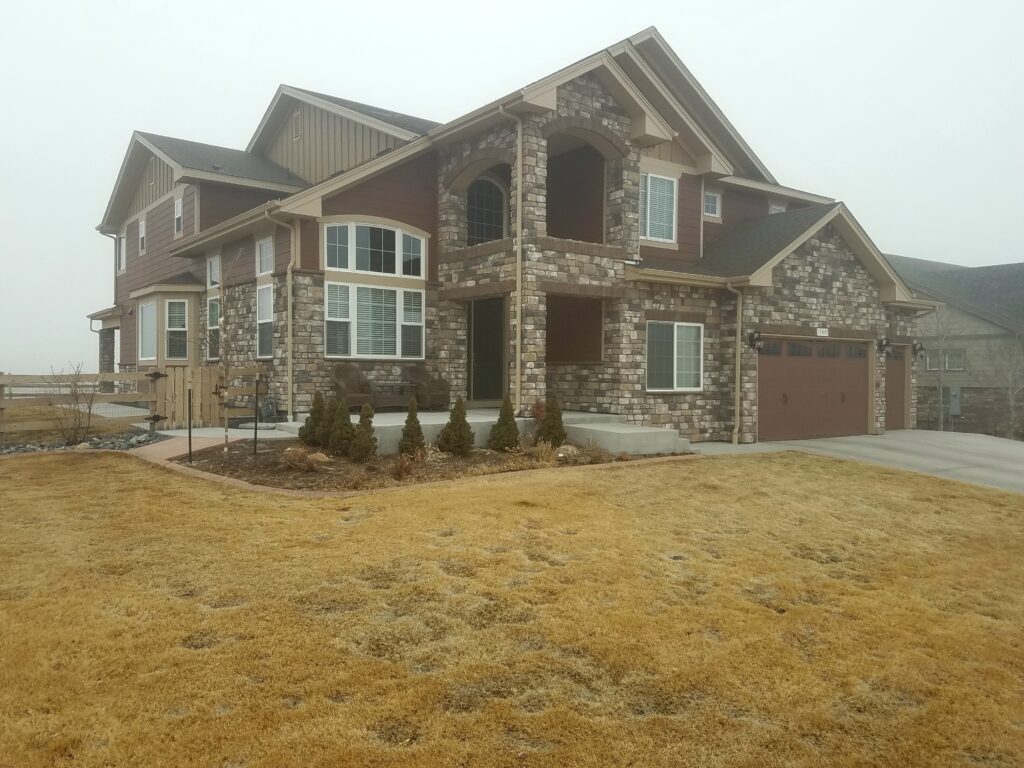
After Treatments
(Approx 18 Months)
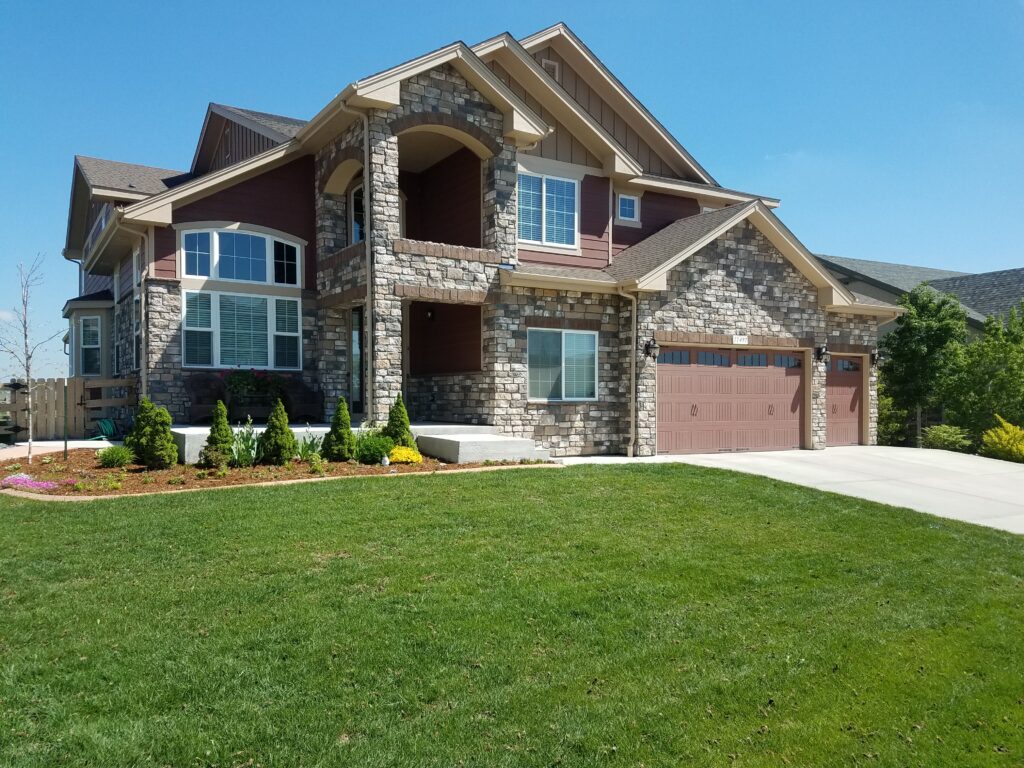
How to Cure Necrotic Ring Spot
Step #1 – Correct the Overwatering Problem
If you notice NRS in your lawn, it’s a sign of an underlying issue—excessive moisture. The first and most crucial step toward recovery is to reduce watering to prevent further damage. Implementing the 1-2-3-2-1 lawn watering technique can help regulate moisture levels and create an environment less favorable to the fungus.
Improperly Programmed Sprinklers Cause NRS
The spores of the Necrotic Ring Spot fungus are found in soils worldwide, but regions like Colorado, where sprinkler systems are common, are particularly prone to NRS. Unlike natural rainfall, which varies in frequency and intensity, irrigation systems can create consistently overwatered conditions when programmed incorrectly, accelerating fungal growth.
Step #2 – Rebuild Soil Microbial Health
Restoring a healthy soil microbiome takes time and consistency, often requiring up to two years for full recovery. This process is essential for strengthening the lawn’s natural defenses and preventing future outbreaks.
Organic Soil Conditioners Help
By reducing overwatering, using organic soil conditioners like humate and compost, and fostering a balanced microbial ecosystem, you can eliminate NRS at its source and promote a healthier, more resilient lawn in the long run.
A Living Soil is the Key to Curing NRS
HOW LONG DOES IT TAKE TO REBUILD THE SOIL
Rebuilding the Soil’s Microbiome Takes Time!
Healthy soils are essential for maintaining a vibrant lawn, and one key component is the presence of beneficial microbes. These microbes help stabilize the soil’s microbiome, creating a competitive environment that keeps harmful organisms, such as necrotic ring spot fungi, in check. Without these beneficial microbes, the necrotic ring spot fungus can thrive unchecked, particularly in oversaturated soil, which promotes an oxygen deprived environment for the spores to thrive.
Full Soil Recovery Takes Approximately
1-2 Years
When a necrotic ring spot outbreak occurs in your lawn, managing it can be a daunting challenge. The recovery process is lengthy, often taking nine months or more. This extended timeline is primarily due to the need to rebuild soil health. In an oxygen deprived environment the necrotic ring spot does not have any healthy competition from beneficial microbes. Therefore, having patience and the commitment to the soil recovery process is crucial for reviving your lawn from necrotic ring spot.
Before and After Necrotic Ring Spot Aerial Photos
Necrotic Ring Spot Before Treatment Began
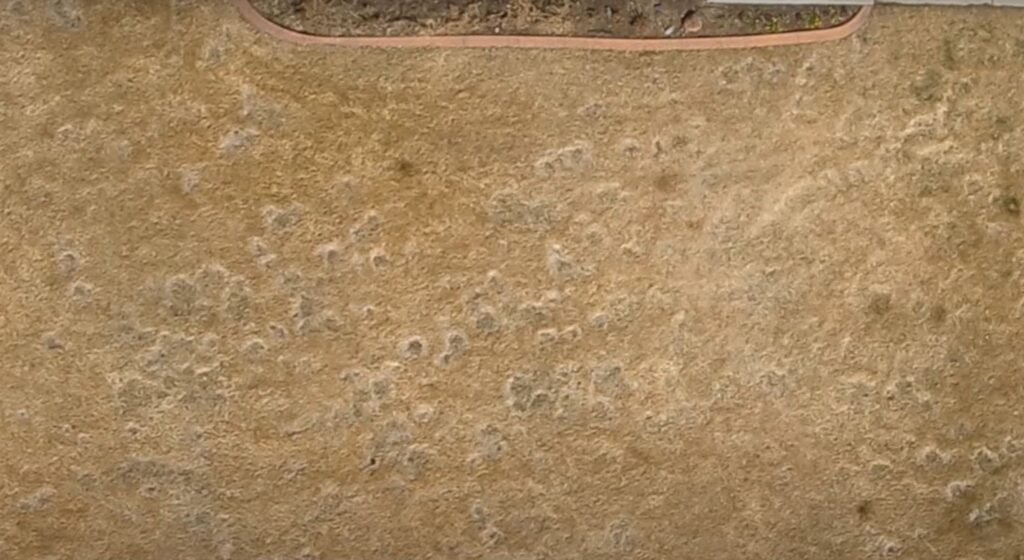
4 Months After NRS Treatment Process Began
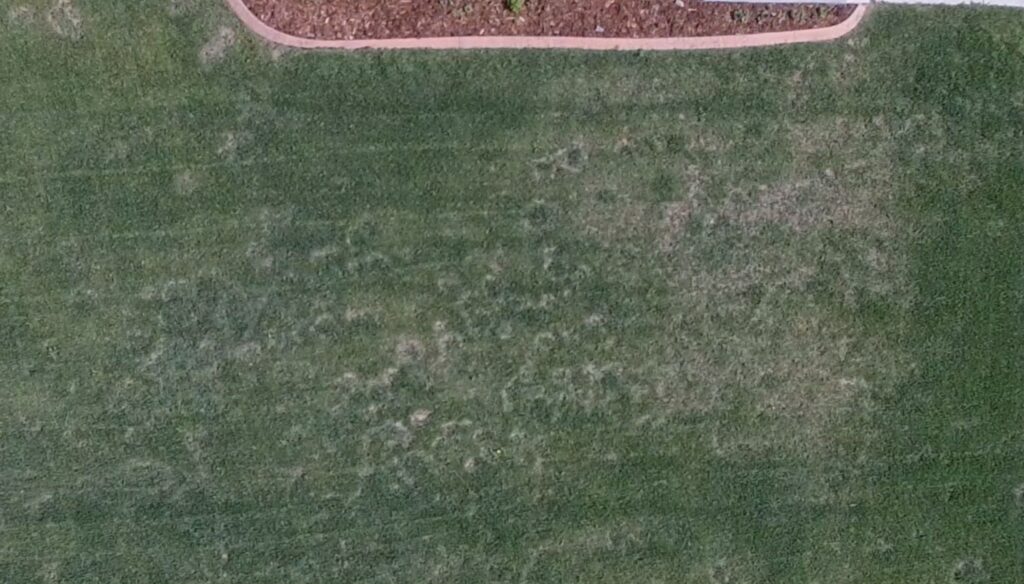
6 Months After NRS Treatment Process Began
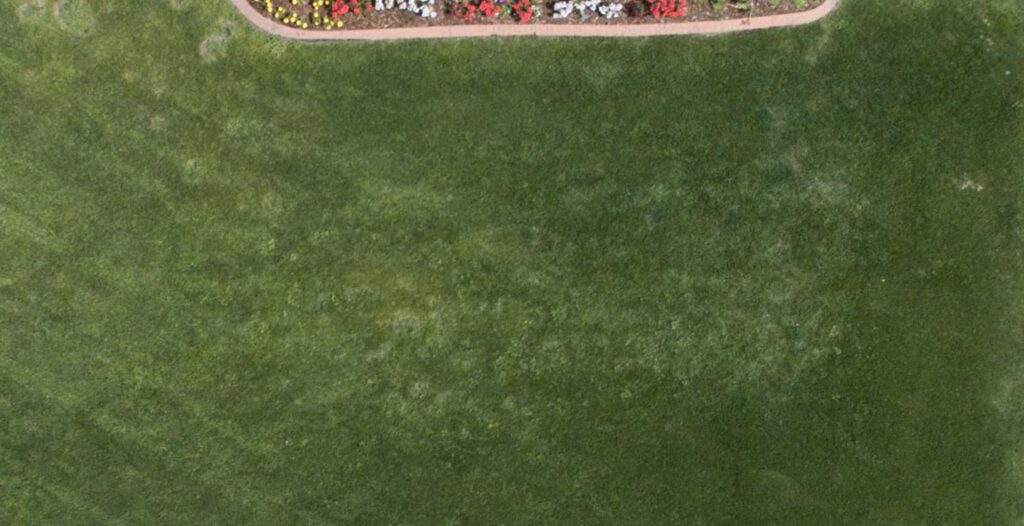
15 Months After NRS Treatment Process Began
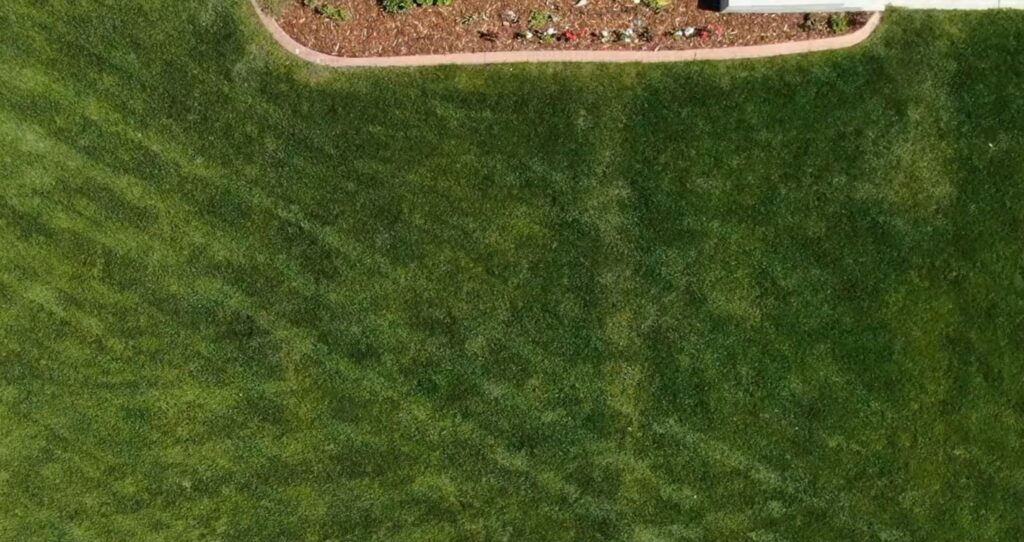
How to Cure Necrotic Ring Spot in Grass
Should You Apply a Fungicide?
Fungicides are a Bad Idea!
Fungicides Kill Both Good and Bad Microbes
When dealing with Necrotic Ring Spot in your lawn, it’s crucial to avoid fungicides. While they do target harmful microorganisms, they also destroy the beneficial microbes. Rebuilding the beneficial microbial population is essential to reclaiming the lawn from the Necrotic Ring Spot fungus. The best approach to curing Necrotic Ring Spot is to foster a thriving, diverse community of beneficial microorganisms. Once the soil and the microbiome is balanced, the microbes will naturally combat the Necrotic Ring Spot fungus spores.
Fixing the Anaerobic Soil Takes Time
The main reason a lawn becomes overrun by Necrotic Ring Spot is because the excessive water caused by the overwatering replaced the air in the soil, and without air the majority of the microbes die. The Necrotic Ring Spot fungus thrive in an anaerobic environment which is why they thrive in an excessive lawn watering environment.
Necrotic Ring Spot Spores are In Everyone’s Soils
It’s essential to understand that Necrotic Ring Spot fungus spores are always present in the soil and are not spread by core aeration, lawn mowing, or other lawn maintenance activities. These spores are everywhere; they only pose a threat when excessive overwatering occurs for extended periods. By adjusting your watering habits to follow the 1-2-3-2-1 lawn watering technique and promoting healthy soil, you can effectively manage this problem.
DO NOT Apply a Fungicide!
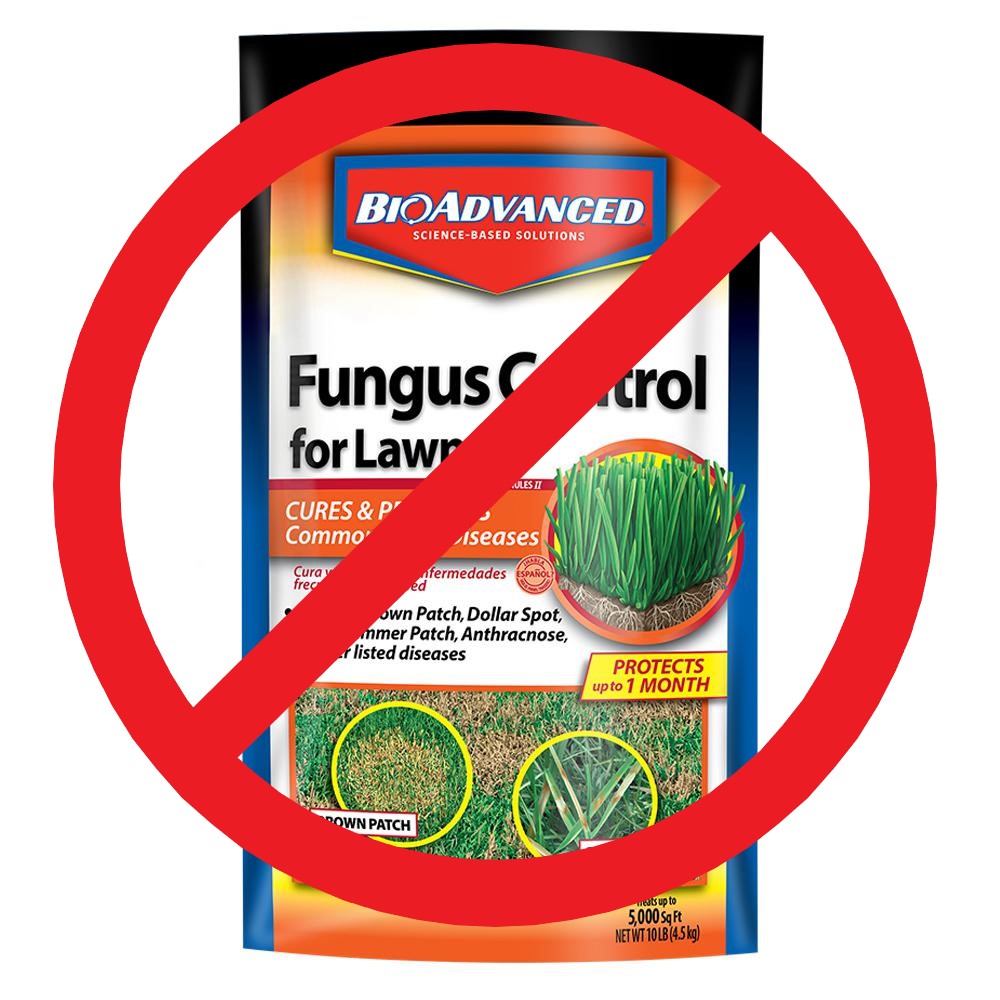
A Closer Look at Necrotic Ring Spot?
How to Cure a Necrotic Ring Spot Infested Lawn?
Step #1: Fix the Lawn Watering Problem (Easy to Fix)
Program the Controller to Follow the 1-2-3-2-1 Technique
The most important step is to address the issue of overwatering the lawn. Necrotic Ring Spot is always found in areas that are excessively moist or wet, particularly where drainage is poor. To help remedy this, follow the 1-2-3-2-1 lawn watering technique. This method allows adequate time between lawn watering cycles, giving adequate time for the soil to dry out completely. Additionally, it’s crucial to water early in the morning rather than late at night. If the overwatering isn’t resolved, the lawn fungus problem will continue to persist. Organo-Lawn will not guarantee curative results for your lawn in the Boulder or Fort Collins area unless an Organo-Lawn employee performs a sprinkler startup or audit.
Step #2: Rebuild the Microbial Population in the Soil
(Takes Time and Difficult!)
Rebuilding the Microbial Populations Takes Time (1-2 Years)
It is essential to rebuild the beneficial microbial populations in the soil. The fungus will continue to be an issue until beneficial microbial activity is restored. Please note that rebuilding the soil takes time; a severe case of necrotic ring spot may take 1-2 years to fully recover.
How Do We Rebuild the Soil?
Lots of Core Aeration
Perform 2-3 lawn aerations per year, one in early spring, one in late spring, and one in the fall to alleviate soil compaction and introduce air into the soil so the microbes can breathe. Air is vital to establishing a living soil and the more a lawn is aerated the faster the lawn will recover.
Double Aeration is Even Better!
Double aeration is a good idea for lawns with severe necrotic ring spot damage or for people that want to speed up the recovery process.
Remove the Dead Grass (If Necessary)
Manually remove the dead grass in the necrotic ring spot circles. You can do this using a heavy metal rake. It takes a little bit of effort, but the lawn will recover quicker if the dead grass has been removed.
Metal Rake
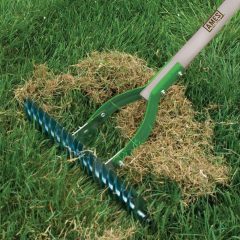
Humate Soil Conditioner
Stimulate beneficial microbial activity by applying Humate soil conditioner 2-3 times per year. Humate will feed the beneficial microbes and help break up compacted soils.
If you don’t have access to a Humate soil conditioner product, try to use a 100% organic soil conditioner or compost as an alternative.
Apply Only High Quality Organic Fertilizers
Avoid chemical fertilizers or anything with a fast release or inorganic nitrogen source. The nitrogen in chemical fertilizers is typically white in color and high in salt. These salt based nitrogen sources kill beneficial microorganisms and will hinder the recover process. A very good organic fertilizer for curing necrotic ring spot is Synergy with Corn Gluten Meal.
Proper Lawn Mowing
Never mow the grass when it is wet, and always wait 24 hours after a mowing to water the grass. After a mowing the grass blades have been damaged. It takes 24 hours for a grass to repair the abrasion. If water is added to the lawn before the lesion has time to heal, the fungus can use the water as a transportation mechanism and infect new and otherwise healthy blades of grass. Make sure to mow the grass at 3 inches or taller.
Be Patient!
It Takes 1-2 Years to Recover the Soil
Patience is a key factor for homeowners tackling lawn issues, but it can often be the toughest challenge when dealing with Necrotic Ring Spot. Depending on the severity of the infestation, it may take up to 2 years to fully recover the lawn. The reason for this is because it takes a long time to rebuild the beneficial microbial population in the soil.
Monitor the Progress
If the lawn hasn’t made much progress after following steps 1-6 and a full year has passed, the reason may be that the soil is still lifeless or lacking in beneficial microbial activity. This means that one of the 4 main (air, water, food, and heat) elements in soil recovery is still not correct.
Air, Water, Food, and Heat
Just like all living things, microbes need 4 basic elements to thrive: air, heat, water (keeping it moist but not waterlogged), and food (organic matter) to thrive. If the lawn is not improving, it is essential to ensure one or more of these vital elements—air, water, heat, and food—are being properly addressed. Overwatering is particularly detrimental and is usually the element that is still out of balance.
Cheical Fertilizers Kill Microbes
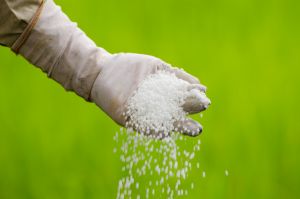
If You Aren’t the Patient Type!
Speeds Up Recovery with Compost!
We offer compost top dressing services at an additional charge for customers that want to dramatically speed up the recovery process. We have found that one application of a high-quality compost can enhance the recovery time by up to 2 times faster.
Introduces Millions of Beneficial Microbes
The reason that compost top dressing is so effective is because a high-quality compost is already teaming with millions of microbes. Therefore, instead of rebuilding the microbial populations naturally, the compost top dressing will introduce the microbes organically.
Remember…. Avoid Fungicides!
Fungicide Applications Kill Microbes and Microbes are What We are Trying to Rebuild
Using fungicides to treat Necrotic Ring Spot (NRS) can often do more harm than good. While fungicides may temporarily suppress the fungus, they do not address the root cause of the disease—poor soil health, compacted conditions, and imbalanced microbial populations. The us of fungicides can kill beneficial microbes that naturally help suppress the disease, further weakening the soil’s ability to recover. Additionally, NRS is primarily a stress-related disease, meaning that improving soil aeration, increasing organic matter, and maintaining proper watering practices are far more effective long-term solutions. Rather than relying on fungicides, focusing on soil health and plant resilience is the best way to manage and prevent Necrotic Ring Spot.
Build the Soil with Organics
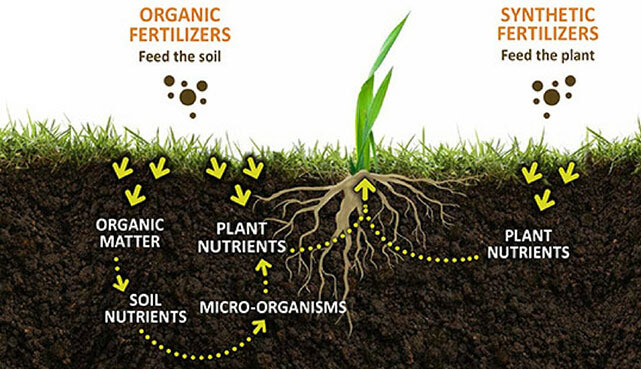
Treatment Schedule for The Year
Do You Need Help Fixing Your Necrotic Ring Spot Lawn?
Treating necrotic ring spot fungus may seem straightforward; however, correcting the watering practices can be complicated.
Boulder (303) 499-2000
Fort Collins (970) 225-9425
Understanding the Necrotic Ring Spot Recovery Timeline
Necrotic Ring Spot Treatment FAQs
How to Fix a Necrotic Ring Spot Lawn?
To effectively address Necrotic Ring Spot, it’s essential to focus on eliminating the underlying cause rather than simply treating the symptoms. Infestations of Necrotic Ring Spot fungus in a lawn typically indicate that the lawn has been overwatered for an extended period. Severe overwatering creates an anaerobic environment in the soil, displacing air and allowing only certain types of soil microbes to thrive.
Fixing the Lawn Watering Issue is the Most Important Step
To remedy the fungal problem, the most crucial step is to water deeply but infrequently, following the 1-2-3-2-1 lawn watering technique. Creating a living soil rich in microbial activity is key to curing Necrotic Ring Spot. A diverse and competitive microbial population in the soil contributes to a healthier lawn.
Stick with the Plan!
Effective lawn care practices to help heal Necrotic Ring Spot without the use of chemicals include using humate soil conditioners, performing lawn aeration, and mowing properly. It is important to avoid applying lawn fungicides to areas affected by Necrotic Ring Spot, as these products can eliminate both harmful and beneficial microbes in the soil, which is counterproductive to curing the fungal issue.
The recovery time from Necrotic Ring Spot (NRS) depends on the severity of the condition. If the NRS is mild, it typically takes 3 to 6 months for the disease to resolve. However, in severe cases, it may take 1 to 2 years for the lawn to completely recover from all symptoms. We have found that applying compost top dressing alongside the regular treatment plan can accelerate recovery, reducing the time needed by approximately half.
We have found that the only way to guarantee results is to perform all of our services ourselves. The most challenging part to get right is the sprinkler audit. Additionally, we have noticed that when other companies handle the core aeration, the results are not as effective as when Organo-Lawn performs the aeration.
The improvement of a lawn affected by Necrotic Ring Spot depends on the time of year treatment begins and the severity of the damage. If treatments are started during the summer months, the lawn may initially appear worse before it starts to improve. This occurs because adjustments to the lawn’s watering schedule can temporarily lead to a decline in appearance before any positive changes take place.
Generally, we’ve observed that in the first one to two months, the lawn may look worse or show little to no improvement. However, with time, it will gradually start to recover. Patience is crucial when successfully treating a lawn infested with Necrotic Ring Spot.
Technically, yes, but in reality, no. Aerators pull plugs of soil from the ground, and if these plugs contain the fungus, it could transfer spores to other areas of the lawn. However, for the fungus to establish itself in a new lawn, the watering conditions would have to be excessive, creating an environment ideal for Necrotic Ring Spot (NRS) to take hold. NRS fungi thrive in anaerobic conditions, where the soil is heavily saturated and lacks oxygen. Therefore, a healthy lawn would not develop Necrotic Ring Spot just because a plug from an aerator was introduced into it.
Avoid using fungicide on lawns affected by Necrotic Ring Spot. These chemicals can disrupt the balance of both beneficial and harmful microbes in the soil. Instead, concentrate on nurturing the beneficial microbes, as they will help outcompete and eliminate the harmful ones, ultimately restoring your lawn’s health.
Many chemical lawn care companies focus on treating the symptoms rather than resolving the underlying issues. Unfortunately, the products they use often harm the beneficial microbes that are essential for healthy soil. Both fungicides and chemical fertilizers can kill these important organisms. Without revitalizing the population of beneficial microbes, a lawn suffering from Necrotic Ring Spot will never fully recover. It’s crucial to adopt a holistic approach to lawn care that fosters soil health and addresses root causes for lasting results.
If you’re dealing with Necrotic Ring Spot, it’s a sign that your watering practices need attention. We’ve heard from hundreds of customers who faced the same issue, and in every case, a thorough evaluation of their sprinkler systems revealed a problem with overwatering. By correcting this, you can restore the health of your lawn and prevent further damage!
You don’t need to remove soil or sod from a lawn to treat Necrotic Ring Spot. The solution lies in addressing the underlying causes, which are always severe overwatering and a lack of beneficial microbial activity in the soil. By correcting these two issues, your lawn will no longer be prone to developing Necrotic Ring Spot.
We have discovered that applying compost as a top dressing will introduce billions of beneficial microbes into the soil. This can significantly accelerate the recovery of the lawn, provided that the necessary conditions to support these beneficial microbes have been addressed. Specifically, proper lawn watering practices should be in place, and core aeration should have been performed.
